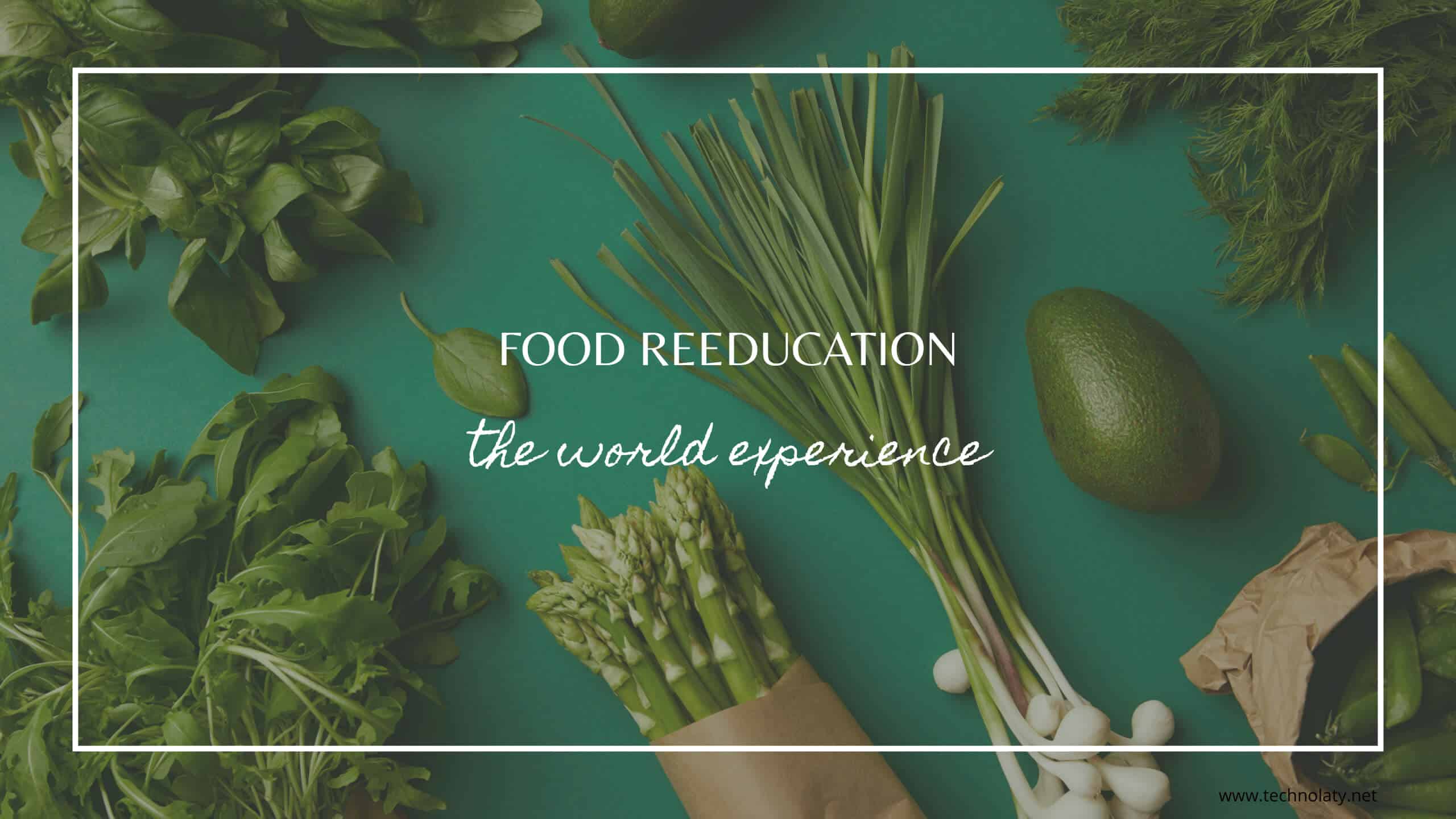How To Start Food Reeducation
Changing your diet without the dietary changes significantly impacting your routine is possible. To start the food reeducation process, you should rethink the foods you consume, eliminate harmful habits for your health and try to create a food plan. Understand that these are small steps that will lead to a healthier life. That’s why you must set simple goals and promote manageable meal changes.
The secret is to do everything according to your ability to adapt, respecting limitations, and valuing aspects of strength and determination. So stay away from miraculous promises. On the contrary, there are safer and possible forms of food reeducation.

Check out some habits that make all the difference in the health of your body and mind:
1. Mealtimes should be quiet
Table of Contents
When eating, focus on the activity you are doing. Avoid staying connected to social media or doing some work while eating. Also, eat slowly, and chew calmly. This makes digestion a faster and healthier process.
When you grind food well, it increases the feeling of satiety with less food. Eating fast makes the stomach slow to realize it doesn’t need more food. Consequently, you will feel the need to eat more to feel complete.
2. Drink water often
Although everyone knows the importance of hydration, only some adopt this habit. The ideal amount of water to keep your body hydrated depends on factors such as weight, level of physical activity, climate, metabolism, and diet. Therefore, try to consume at least 2.5 litres of water per day.
Hydration of the organism needs to be combined with a balanced diet. It is common for some people to think that just increasing water intake stimulates significant weight loss, but it helps eliminate toxins and reduce the feeling of swelling.
3. Eat in calm environments
Have your meals in a clean, airy, and well-lit environment whenever possible. The temperature must also be comfortable. Also, avoid distractions. For example, when you watch TV while eating, you tend to eat faster and not pay attention to what you consume.
Sometimes your body sends signals that it’s satisfied, but you don’t realize it because you’re busy with other things.
4. Avoid ultra-processed foods
The manufacture of most of these foods relies on vast amounts of sodium, sugars, and trans fats. In addition, flavor enhancers, dyes, flavorings, thickeners, and preservatives harm health.
Most ultra-processed foods are nutrient-poor and have high inflammatory potential. In other words, they are the gateway to chronic diseases such as diabetes, hypertension, obesity, and heart disease.
5. Plan yourself
Food reeducation is keeping control over what you eat. Therefore, you must know that you will choose what will meet your needs. Preparing your meals starts with proactive decisions at the time of purchase.
Make a list and buy only what you planned. A balanced shopping cart is the first step towards quality food.
6. Choose healthy dishes according to your financial reality
There are several options for healthy and delicious dishes that fit your budget. Best of all, they don’t require great expense or skills from an experienced chef. Select the most nutritious and balanced recipes to make your new eating habits consistent with your finances.
Choose the dishes of the week and provide the ingredients. Foods that are in season are also cheaper and tastier. If you are at the beginning of food reeducation, avoid dishes that are too elaborate or take a long time to prepare. Prioritize simple and easy-to-find ingredients.
Remember to choose recipes based on your quality standards. This means that they must be low in fat, low in salt, and low in sugar. Another tip is to choose different dishes that allow different combinations of the same ingredients. Many people think that dietary reeducation involves buying many products and supplements. This is not true. Food reeducation should be done according to your financial reality.
7. Don’t go without food for long periods
When we go a long time without eating, our body understands that it is going through a risky situation. This way, it starts to store energy, and, as a consequence, our metabolism slows down. Therefore, distribute your meals throughout the day, including fibre-rich foods, which help you feel full.
Opt for lighter meals, low in fat and rich in nutrients and fibre at night. Weight loss through nutritional education is responsible for teaching us how to eat and enjoy every meal best.
8. Get exams and consultations with specialists frequently
Changes in your eating habits should be monitored and guided by a team of experts. Remember to do annual check-ups to ensure your body uses all nutrients well.
9. Don’t give up what makes you feel good
The big problem with restrictive diets is that you think they must be allied with suffering.You don’t have to give up parties or going to bars and restaurants to focus on healthier eating. Quite the opposite! Being next to special people in moments of relaxation generates well-being and lightness.
In this condition, your body produces more serotonin, a substance affectionately called the “hormone of happiness.” On the other hand, this prevents the production of cortisol, the “stress hormone,” which, when elevated, triggers episodes of anxiety. This, therefore, can trigger food compulsion.
Therefore, do not refuse invitations to happy hour or a family barbecue. What you should do is, during these times, choose the healthiest options.
10. Do physical activity
It’s more than just focusing on food to reach the ideal weight and maintain health. It would help if you adopted habits that promote well-being in your everyday life. One of them is to exercise frequently. Start with a 30-minute walk. Another option is to take a moment of the day to dance to the songs you like to listen to.
In addition to bodybuilding, do aerobic activities, such as hydro gymnastics or spinning. The important thing is to choose a physical exercise that gives you pleasure while helping you burn calories.

